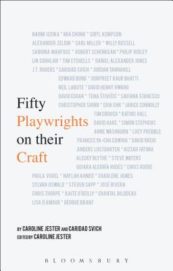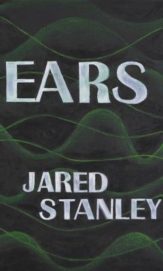 Interviewed by W.D. Clarke
Interviewed by W.D. Clarke
Jeff Bursey's recently reissued first novel, Verbatim (Verbivoracious Press, $16), is a wicked satire of political life that presents a "verbatim" record of the workings of a legislature in a fictional province in eastern Canada. In Bursey's nuanced rendering, the evil banality of politicians of all stripes is recorded for posterity by Hansard, the body charged with the official transcription of parliamentary proceedings in much of the British Commonwealth.
Though Hansard's record is treated as historical fact, it is not strictly a "verbatim" reproduction of the previous day's parliamentary performances. Indeed, Hansard's mediation of reality becomes a kind of performance of its own, one with often farcical and sometimes quite serious repercussions. Via emails from the Director to his editors and transcribers, and to his political minders in the legislature, the novel both comments upon and refracts how we record the official workings of government. Furthermore, if you have ever worked in an office, you will recognize the trail of politics on a human scale here, in the record of microaggressions, the clash of personalities, and the struggle of those lowest on the bureaucratic totem poles to “do more with less.”
This second edition of Verbatim includes excellent and often witty ancillary material: an introduction by Sascha Pöhlmann is presented as an "edited transcript" of a university colloquium on the novel, and an afterword by David Hallett situates the novel in the exploratory tradition of American novelist William Gaddis.
Jeff Bursey's other books include the novel Mirrors on which dust has fallen (Verbivoracious Press, 2015) and the essay collection Centring the Margins (Zero Books, 2016). His plays have been performed numerous times in Canada, and he is a frequent author of reviews and essays for a variety of publications.
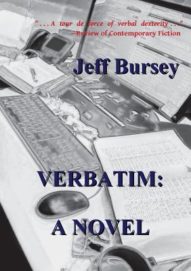 W.D. Clarke: Can you give the reader a bit of background on what spurred you to write this unusual book? You have worked in the past for Hansard, the body responsible for transcribing and publishing the proceedings of Canada's legislative bodies―what did you observe there that inspired you to write such a book as this?
W.D. Clarke: Can you give the reader a bit of background on what spurred you to write this unusual book? You have worked in the past for Hansard, the body responsible for transcribing and publishing the proceedings of Canada's legislative bodies―what did you observe there that inspired you to write such a book as this?
Jeff Bursey: In 1990, I started work as a transcriptionist with the Hansard division of the Newfoundland and Labrador House of Assembly, in St. John`s, Newfoundland and Labrador. The immediate thing that struck me about the politicians, who came from all sorts of previous occupations, was how negative they were (especially in the opposition) and the poor language they used to express their thoughts. They often needed things explained in the simplest terms. Most couldn't speak in more than phrases, fragments of sentences. On the level of civic awareness this introduced me to many new ideas; as well, on the level of language, and coming out of a radio background where a smooth flow of speech is essential, the corruption of language indicated decay of thought. Capturing those things, as well as illustrating how we allow ourselves to be governed, inspired the novel, which I began taking notes for in 1992.
WDC: The novel's title is quite ambiguous. Can you expand a bit on its understanding of the relationship between the truth (what is said “verbatim") and fiction, especially in relation to the manifest subject matter, provincial (in both senses of that word) politics?
JB: If I expand on the title, then it would be less ambiguous. At most I’ll say, here, that the tension between supposed truth and supposed falsehood is apt, as it fits into how a novel can work and how a legislature operates. In any legislature, if one member calls another member a liar, that word must be retracted. Not because it’s true or untrue, but because the word is objectionable since all members are assumed to be speaking the truth. There is no investigation into the accuracy of the use of the word liar. Falsehoods can stand alongside truth. Same with Verbatim: A Novel.
WDC: Is that possibly metaphorical in some wider sense, this assertion above, to the relationship between journalism, or even fiction, and culture?
JB: We live with contradictions, ambiguity, ambivalence. Thinking that one venue always favours greater clarity over any other would be a mistake.
WDC: The Director of Hansard seems to be very, very focused on "improving" some details in his employees’ output. Now, details do matter, but should he not have bigger fish to fry? Or am I missing something, i.e. is it exactly in such tiny details where politics of a kind is really happening—the micropolitics of all our daily lives, on which we stand, compromise or fall to greater or lesser import?!
JB: Sometimes we can’t fix big things, we can only attend to small matters, convinced that if they are taken care of then some order is established. Of course, the Director was hired to reform Hansard ways. That’s the remit of the position. There are no bigger fish in this kind of pond. Everyone who works in any kind of job knows that they only have so much agency, and they can invest a lot of themselves in it. But you’re right. It’s more staking out a small claim, and also standing up for the staff so they aren’t pushed to work overlong.
WDC: Let's talk about the epigraph to the novel by Wyndham Lewis, which reads:
Should we describe it as Satire
(merely because it does not refine the truth)
or should we call it realism?"
What do you feel is the proper function of satire? Has this changed since Lewis's day?
JB: That epigraph comes from a late Lewis book, Rude Assignment, where he talks, as he did in earlier books, about satire, its kinds and methods. Anyone who finds it significant that the remark is in the form of a question will allow that to determine their interpretation of what follows.
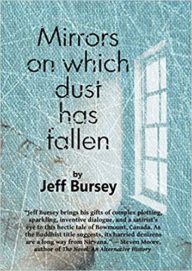 On satire generally, there’s a direct line from Lewis’s use of satire, say in The Apes of God, to William Gaddis and Gilbert Sorrentino. Now, satire has no proper or improper function. You use any of its kinds however you want. (In my second novel, Mirrors on which dust has fallen, there is present a different kind of satire.) Most people can’t believe the behavior of members unless they’ve seen it from the visitors’ gallery or on television. Clearly I heightened the articulacy of some members or else the book would have been a dreadful slog, but for the most part their tetchiness and bitterness and frustration are real, as are what they do—which is another way of saying, what they do in our name since we put them there. Nothing has changed in how we use satire. In Canadian literature, to my mind, it is often more gum than tooth. I wanted all teeth.
On satire generally, there’s a direct line from Lewis’s use of satire, say in The Apes of God, to William Gaddis and Gilbert Sorrentino. Now, satire has no proper or improper function. You use any of its kinds however you want. (In my second novel, Mirrors on which dust has fallen, there is present a different kind of satire.) Most people can’t believe the behavior of members unless they’ve seen it from the visitors’ gallery or on television. Clearly I heightened the articulacy of some members or else the book would have been a dreadful slog, but for the most part their tetchiness and bitterness and frustration are real, as are what they do—which is another way of saying, what they do in our name since we put them there. Nothing has changed in how we use satire. In Canadian literature, to my mind, it is often more gum than tooth. I wanted all teeth.
WDC: Is hyperbole the trope that today's political/satirical novelist must resort to in order to be "realistic"? Or, to put it yet another way: what kind of statement is this novel making about the novel's relationship to socio-political reality?
JB: Novelists have to admit that reality far exceeds what we imagine. We don’t need to be hyperbolic (any more than we need to be satirical). The integrity of the writing project comes first, and we must choose the methods and approaches that are most suitable.
WDC: The novel depicts your unnamed province as a place where foreigners come to extract wealth (via resources) or to spend money on tourism, and little else. Do you think that that is a fair (or hyperbolic) depiction of the Canadian Maritimes?
JB: The concerns you speak about are widespread across Canada: ore, timber, oil and gas, fish, diamonds—wealth is extracted from every part of Canada. As to if it’s a fair picture, one need only look at current headlines where the federal Canadian government intercedes to prevent control of businesses, and thus industries, by companies that may or may not be arms of other governments. You can also look at NAFTA and the agreement with the EU. These are massive trade agreements that revolve around changing standards of how things were done until comparatively recently here and the consequent removal of resources.
WDC: How "peculiarly Canadian" do you feel that this book is? I note that the first publishers were Canadian, but that it is being reprinted by a foreign firm, Verbivoracious Press.
JB: I finished this novel in 1995. I thought its parliamentary aspect, its take on politics, and its setting, would speak forcibly to Canadian publishers as an example, in exploratory fiction, of a quintessential Canadian book. No one wanted anything to do with it, however, until 2009 when Enfield & Wizenty said they’d publish it. (A publisher in St. John’s changed its mind in 2006 and cancelled our contract after I had corrected the proofs.) Since there are legislatures in every province and territory in Canada, as well as two in Ottawa, the nation’s capital, this novel has roots throughout the country.
You’ll remember that in the mid-1990s a separatist party was Her Majesty’s Official Opposition, and the satirical television show This Hour Has 22 Minutes was doing its best to ridicule prominent political figures. My voice added to this chorus, or so I thought, naively as it turned out. But the topic, while specialized, is far from parochial. Every adult can vote. We bear a responsibility for our continued faith in the way we govern ourselves and who we choose to represent us. That’s personal and systemic.
WDC: I am intrigued by the independent representative for Coventry who is never given leave to speak on the floor of the House—by any of the major parties. Does that tell us something about the real relations of power in a liberal democracy, do you think?
JB: Yes. A legislature is a special world where the abusive nature of people can be shown most clearly and without much censure. You may, for acting up, be asked to leave the House for a few days, but you don’t lose your job. Muzzling Coventry is all in a day’s work, and some would find it fun, and hardly damaging to freedom at all.
WDC: The editors of Hansard have a lot of input on how the voices of the elected representatives get presented to the public, and to history. What has your own experience been with the editorial process as a fiction writer, and what do you see as the proper role of editors vis-a-vis the author, as the entire structure and contents of Verbatim calls the unitary nature of authorship into question, does it not?
JB: It might be said that the public reads the editors more than the politicians, in certain cases. Some can barely get out three words without saying “Mr. Speaker” as a kind of placeholder, and that repetition adds nothing to the conversation. As an editor I took many of those things out. The public will never see the corrections, but in Verbatim the fiction reader can. Who speaks for history? That’s an open and fluid question.
Editors can be of most help by not asking that a work be something it isn’t, out of their own taste, but work with the writer on what is there, to bring out the form and the content, if we must divide those two things for the sake of conversation, in the best fashion possible. My experience with one editor at Verbivoracious, especially with regards to Mirrors on which dust has fallen, was great: she had an exacting eye for certain words and phrases, and that improved the manuscript.
WDC: This tension between the spoken and the written word surfaces again midway through, where a member objects to the reading of a prepared speech on the floor, where members are expected to extemporize, I take it. And yet they hypocritically accept that their own bleatings are artfully edited after the fact! Was this tension between what is spoken and what is written, and the weight that we give each, a part of what you were thinking through in this book?
JB: Most of the members I knew seemed cheerfully oblivious to the fact that what they said required correction. The ego gets in the way. It’s not hypocrisy, but is a sign of how unthinking and incurious they are. Only one Speaker—and I worked under eight over twenty-four years—ever said she wanted to be told how to do her job better by staff, and she meant it.
Part of the attraction of writing Verbatim lay in putting down what was cleaned up, and showing how that happened, so everyone could see the process. It can be hellish on some days.
WDC: On a related note, one of your characters makes a joke about a Minister’s “flights of rhetoric.”
JB: If we didn’t allow flights of rhetoric our conversation would be drab. It may be that because I come from a heavily oral culture, at least when I was growing up, people listened intently to others when they told stories, and how you told them mattered as much as what you said.
WDC: And yet the novel is also concerned with how our language is being transformed by bureaucracy/capitalism, no? “Prioritization,” “Actualization”—these turnings of nouns into verbs (so popular in the booming ’80s), “stakeholders,” “parameters”— are just a couple of examples where something dead, deadening, and deadly is happening to our speech.
JB: When jargon reaches the House you know the language is dated already, and that what’s said is being mimicked. Remember, most politicians come from retail, or business, or social services, and they don’t drop the tongue they learned there and become brilliant orators. Also, the prevailing climate of treating government as a business, and that sorry and idiotic expectation that a government should handle its treasury like a householder would handle his or her own bills, means that the deadening language of the financial world has narrowed how they think of things. Most of the conversation in a legislature is about money, when everything gets rendered down. If you only think money, then you’re not going to want to (or feel you could or might want to) escape consumerism and capitalism.
But every field has its own terms. It’s shorthand. Parliamentary language is neither good nor bad, it simply exists and evolves so people in that field can understand each other. I didn’t get bugged by it, and in fact came to appreciate its formal qualities.
WDC: There seems to be, in the corridors of power, an assumption that there is a preferred relationship between the free press (fifth ‘estate’ of the realm?!) and the government: As a character notes, “The previous Director had superb editorial smarts, which some members of the House need, and was discreet. . . . an ability to get along with the sixty-eight members and the political staff is essential. Feathers can’t be ruffled. I’m sure you’ll agree we want a dog that won’t bark.”
JB: I did want to end a relentless book on a down note. Nothing can improve or become better in the kind of world that contains such members and such bureaucrats. Politicians often acknowledge that they are disliked, as a class. They take that seriously, of course, or the more thoughtful ones do, but never enough to change sufficiently. We keep trusting them, out of a variety of motives, and not all of them are, on our part, altruistic, even as they lose their power to backroom people and financiers of campaigns.
WDC: Could we have some further thoughts as to the timeliness of your book’s republication? I mean, it has landed in a very different political climate generally, than it was greeted with in the year of its first debut. The very institutions/foundations of democracy seem to be under threat, and when your new director confidently claims that “Speakers [of the House] come and go, but Hansard has remained,” on one level that seems a bit optimistic, in this new light that we must live under . . .
JB: Oh, yes, the Director is an optimist or on a quest, like many people. We enter work situations convinced we can change things, and then . . . The outside world, in Verbatim, is only hinted at, never truly seen, but it has its problems that were as true in 1995 as in 2010 as now. In these times facts are disregarded in a more extravagant way than we might recall from some years ago, and I’m conscious that this novelistic analysis of the way parliaments work re-enters the literary world that is a smaller part of a more hostile world. But there’s never been a Golden Age of politics where facts were prized above interests.
Perhaps democratic institutions need to be threatened, partly so they’ll reform, partly so people will become aware of what they have and might lose, partly because stagnation is in no one’s best interest, and partly because some institutions are not representative in the most complete sense of the people they are supposed to serve.
WDC: At another point, a politician says that the day’s proceedings were “like one of those modern plays where nobody does anything but there’s always this anticipation about something that never happens but is imminent.” This is what you have just said in a nutshell, isn’t it? What is the appeal of writing about something that is really nothing, a la Waiting For Godot, say, or Seinfeld even?
JB: How we govern ourselves is something essential. In writing the book I wanted to capture both the system and the people within it, and that meant a lot of talking. Sometimes such talk results in a bill that determines liability, penalties, freedoms, and so on, and that is action. The verbal conflicts are action. The damage done to people’s faith in how their members behave is action. Businesses prosper and die, the land is damaged, workers are suddenly threatened with unemployment. There is a lot there, though on the surface it can seem like little of consequence occurs. What intrigued and angered me in the early 1990s were the motivations and abuses that went on every day. I had to stay away from passing judgement and simply provide enough material for readers to freely choose, if you will, a party they agree with. They have to work out their own answer to the question “Is it satire, or realism?”
Click here to purchase Verbatim
at your local independent bookstore

Click here to purchase Mirrors on which dust has fallen
at your local independent bookstore

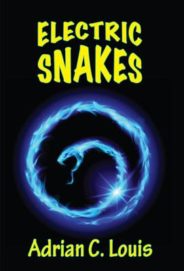 Adrian C. Louis
Adrian C. Louis
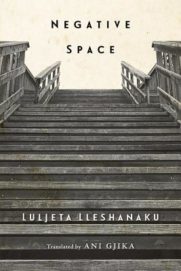

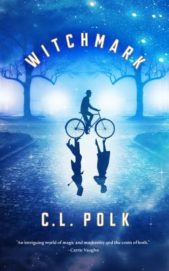
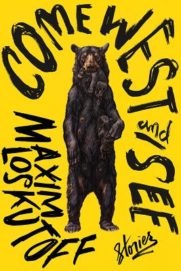
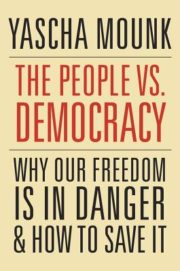
 Interviewed by W.D. Clarke
Interviewed by W.D. Clarke 


